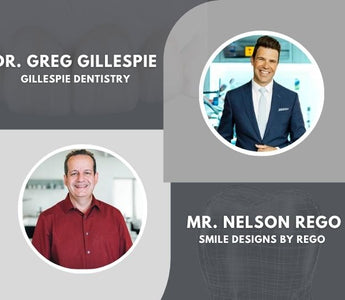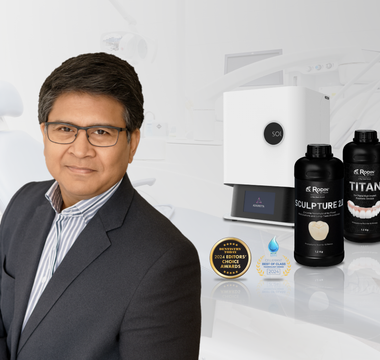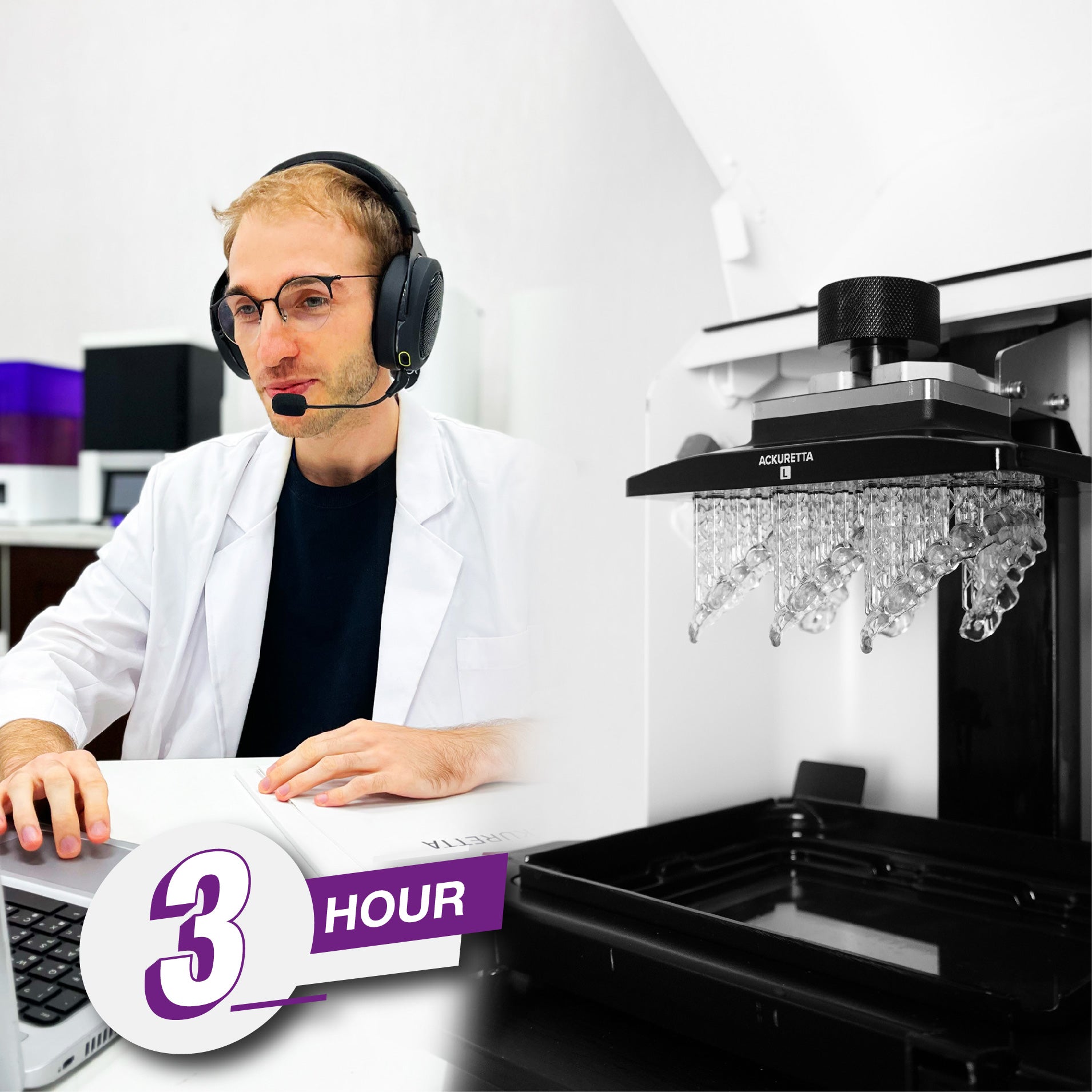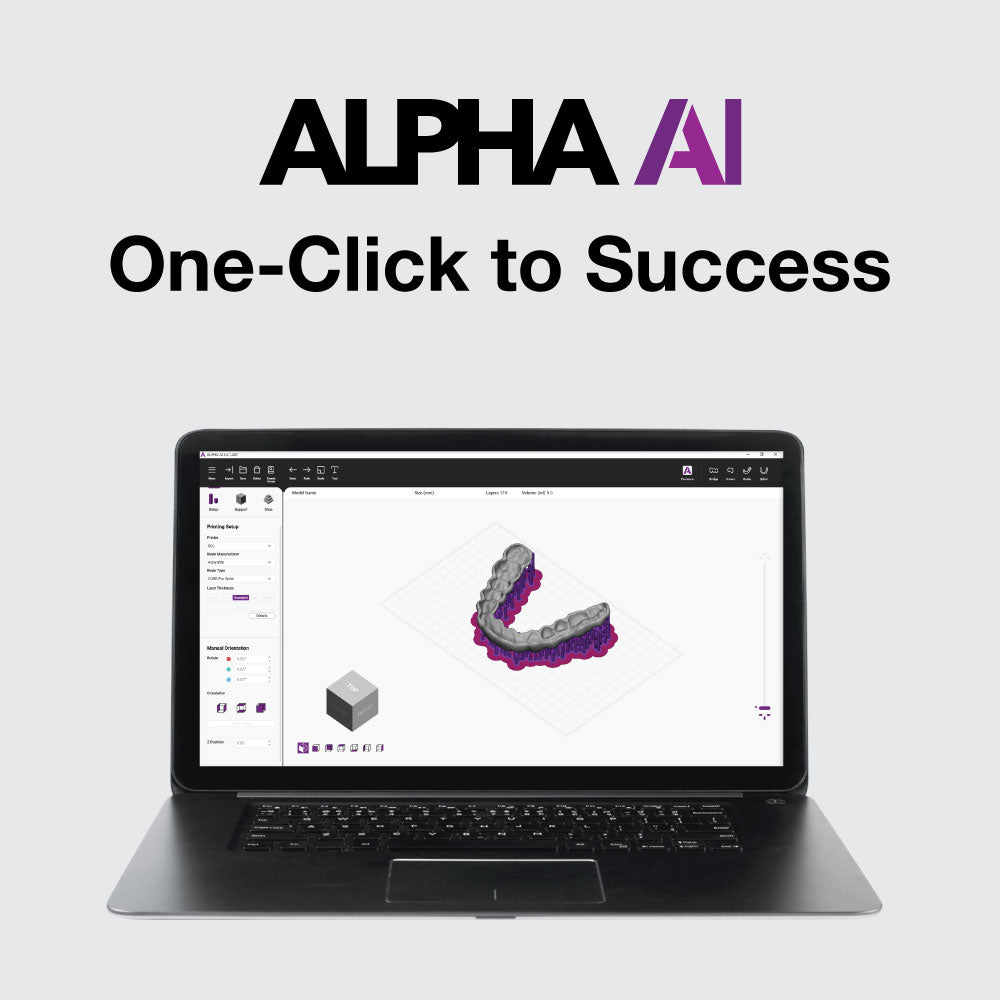By Dr. Greg Gillespie, DDS, and Nelson Rego, CDT, AACD Accredited Member
In particular, CAD/CAM equipment, intraoral scanners, and new materials capable of being additively manufactured (ie, 3D printed) into a variety of restorations—including veneers—have empowered cost-effective workflows that ultimately translate into more timely and financially available treatments for patients. Such technologies, materials, and the digital collaborations they empower allow dentists and laboratories to avoid problematic, error-prone, and inefficient procedures for greater treatment accuracy and process efficiency.
For some no-preparation veneer cases, dentists may choose to design the restorations themselves and then either mill or 3D print them in their practices. Alternatively, when cases are more complex (such as requiring detailed aesthetic nuances and anatomical characterization), dentists can collaborate with their laboratory for restoration design and fabrication or for design only, with restoration files sent back to the practice for milling or printing.
In recent years, a variety of polymer/ceramic materials have been introduced for chairside and laboratory fabrication of veneer restorations. Among these is a recently introduced 3D printable ceramic nanohybrid resin (Rodin® EnVision) that is purposefully designed for veneers.
In particular, Rodin® EnVision incorporates methyl methacrylate resin, ceramic, photoinitiators and inhibitors, and pigment through controlled crystalline phases. As a result, the material demonstrates increased strength, durability, and aesthetics compared to previously available machinable or 3D printable veneer materials. These crystalline phases also contribute to optical properties that enable precise shade matching between the printed restoration and underlying natural tooth structure and/or among adjacent natural teeth, as well as the material’s exceptional post-processing translucency and gloss.
The following case demonstrates the digital fabrication and aesthetic properties of this printable ceramic nanohybrid resin veneer material.
Case Presentation
A 31-year-old man presented with aesthetic concerns regarding his maxillary right and left lateral incisors (teeth #7 and #10). He was dissatisfied with their short length compared to other teeth within the arch, as well as their “set-back” (ie, retroclined) and “shadowed” appearance.

Therefore, to remain as minimally invasive and fiscally conservative as possible, prepless veneers for teeth #7 and #10, which would be 3D printed from Rodin® EnVision, were proposed. These veneers would harmoniously blend into the patient’s existing smile by demonstrating the same proportions he already had throughout his maxillary arch. To enhance pink/white aesthetic balance, the treatment plan would also first involve a gingivectomy at the #7 and #10 sites for crown lengthening. The patient accepted this treatment plan.

The gingivectomy was performed at the dental office using an electrosurge. After gingival healing, the patient returned for record- and shade-taking. Intraoral digital impression scans were captured and forwarded to the laboratory. The shade was veneer materials.
Restoration Design and Printing
At the laboratory, the ceramist digitally waxed up the case and designed the veneer restorations. To fabricate the restorations, the Rodin® EnVision material was first poured into the 3D printer, and the printing sequence was initiated. Once printed, the veneers were removed from the build plate and cleaned with a non-alcoholic, biodegradable cleaning solvent, which would not damage the restorations. The restorations were then rinsed, and the cleaning process was repeated until a matte finish was achieved.



The veneers were then characterized using light-curable naturalizing stains and glaze (Rodin® Glaze and Rodin® 3D Resin Palette) while in the green state. This would promote the best intaglio surface of the veneers was required since sandblasting is contraindicated in order to preserve the oxygen inhibition layer.

Adhesive Cementation
Teeth #7 and #10 were etched with phosphoric acid-etching gel (Rodin® EtchPro) according to a total-etch technique. The etchant was placed on the air-abraded surfaces with a light brushing motion for 15 seconds and rinsed off. The teeth were then thoroughly air-dried but not desiccated.
Then, using a micro applicator tip, the adhesive bonding agent (Rodin® Bond [Pac-Dent]) was brushed onto the etched surfaces of teeth #7 and #10 for 15 seconds. The adhesive was then dried with a gentle airflow for 3 to 5 seconds per tooth until a thin, uniform coat was produced. Teeth #7 and #10 were then cured for 30 seconds each.


To definitively seat the ceramic nanohybrid veneers, the cement (Rodin® EnVision veneer cement [Pac-Dent]) was dispensed directly onto the intaglio surface of each veneer, after which they were placed onto teeth #7 and #10, respectively. Excess cement was allowed to flow from all margins, and the veneers were post-cured from the facial surface for 10 seconds each. Excess cement was then carefully and thoroughly removed from the margins and the veneer surfaces, after which each veneer was cured for a minimum of 30 seconds per surface.
Finishing and Polishing
To finish the seated veneers, any residual excess cured cement was removed with a diamond finishing bur or finishing strips. The margins were polished using acrylic polishing compounds, and the occlusion and overall aesthetics were verified.


Conclusion
Patients are often reluctant to commit to porcelain restorations—whether because of their relatively young age, financial resources, and/or the otherwise structurally intact condition of aesthetically compromised teeth. In this case, the combination of 3D printing technology and Rodin® EnVision ceramic nanohybrid resin material enabled the patient’s treatment to proceed in an ultra-conservative manner, one with little investment of design or production time by the laboratory. It also promoted a streamlined digital workflow within the dental office that reduced chair time, material expenses, and complex, time-consuming procedures.
In the future, as artificial intelligence (AI) and in-office 3D printing are increasingly incorporated into restorative workflows, dentists may choose to offer ultrathin ceramic nanohybrid resin veneers even more efficiently. After using an intraoral scanner to capture the patient’s preoperative and occlusal images (ie, study models and bite registration), AI software could then evaluate and manipulate the images to ultimately propose minimally invasive Rodin® EnVision veneer designs. Once approved by the dentist, the veneers would be 3D printed in the practice through an efficient production process, thereby reducing material waste and operational expenses, and represent a more affordable solution compared to other indirect veneer options.
However, although AI’s use may streamline many aspects of restoration production, the authors believe that more research is needed to determine its true effectiveness, as well as design and manufacturing accuracy.
About the Authors
Dr. Gillespie graduated from the University of Washington School of Dentistry in 2006. He currently maintains a private practice in Vancouver, Wash. Together with his partners and family members, Drs. Brad Gillespie and Dennis Gillespie practice general dentistry with an emphasis on aesthetics, implants, sedation, and interdisciplinary care. Dr. Gillespie approaches comprehensive dentistry in a progressive yet conservative manner, one based on a vision encompassing clarity of purpose, effective treatment planning, utilization of the best materials available—including digital dentistry—and effective communication with colleagues, staff, and patients. A key opinion leader for several dental product manufacturers, he is involved in ongoing material and technique evaluations. Additionally, Dr. Gillespie shares his passion for continuing education by lecturing around the country, as well as furthering his own knowledge of aesthetics, implants, and dental materials. He can be reached at drgreg@gillespiedentistry.com.
Mr. Rego owns and operates Smile Designs by Rego, a progressive dental laboratory specializing in ceramics and other metal-free restorations in Santa Fe Springs, Calif. An accredited member of the American Academy of Cosmetic Dentistry who has studied with the world’s foremost dentists and ceramists, he was the first technician to serve as Chair of Accreditation. A prolific author of more than 75 articles about dental materials and fabrication techniques that have appeared in leading dental magazines and peer-reviewed journals, Mr. Rego is also an evaluator and speaker for several dental product manufacturers. He can be reached at nelson@regosmiles.com.
Disclosure: The authors report no disclosures.
References
-
LeSage B. Revisiting the design of minimal and no-preparation veneers: a step-by-step technique. J Calif Dent Assoc. 2010;38(8):561–9.
-
Alghauli MA, Alqutaibi AY. 3D-printed intracoronal restorations, occlusal and laminate veneers: Clinical relevance, properties, and behavior compared to milled restorations; a systematic review and meta-analysis. J Esthet Restor Dent. 2024;36(8):1153–70. doi:10.1111/jerd.13228
-
Araujo E, Perdigão J. Anterior veneer restorations – An evidence-based minimal-intervention perspective. J Adhes Dent. 2021;23(2):91-110. doi:10.3290/j.jad.b1079529
Ntovas P, Pashias A, Vassilopoulos S, et al. Esthetic rehabilitation through crown lengthening and laminate veneers. A digital workflow. Int J Esthet Dent. 2023;18(4):330–44. -
Siddanna GD, Valcanaia AJ, Fierro PH, et al. Surface evaluation of resilient CAD/CAM ceramics after contouring and polishing. J Esthet Restor Dent. 2021;33(5):750–63. doi:10.1111/jerd.12735
-
Daher R, Ardu S, di Bella E, et al. Efficiency of 3D printed composite resin restorations compared with subtractive materials: Evaluation of fatigue behavior, cost, and time of production. J Prosthet Dent. 2024;131(5):943–50. doi:10.1016/j.prosdent.2022.08.001001
-
Revilla-León M, Gómez-Polo M, Vyas S, et al. Artificial intelligence models for tooth-supported fixed and removable prosthodontics: A systematic review. J Prosthet Dent. 2023;129(2):276–92. doi:10.1016/j.prosdent.2021.06.001























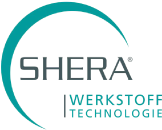








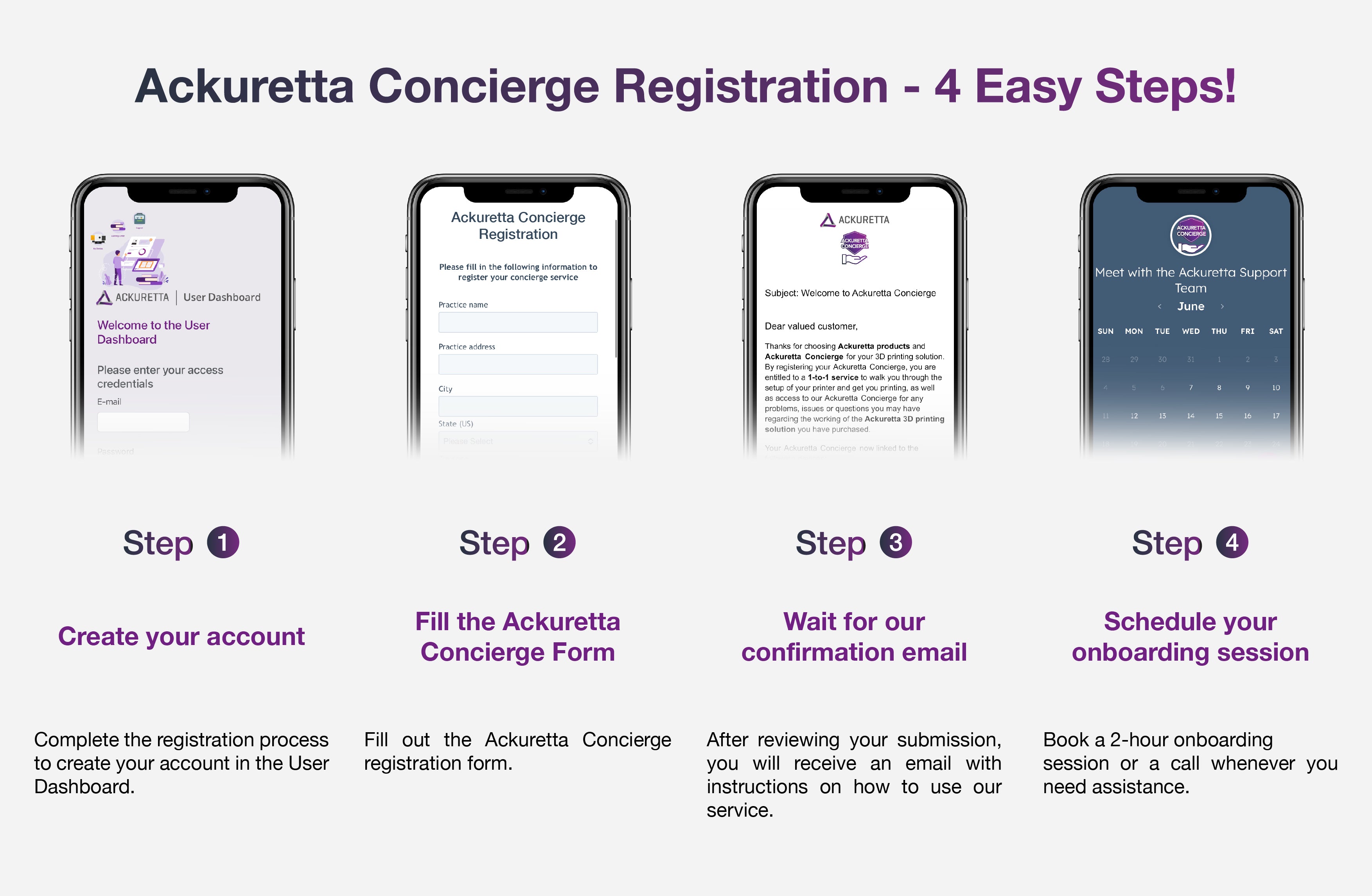






























 Loading ...
Loading ...
